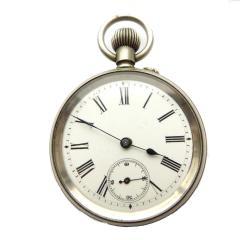-
Recently Browsing
- No registered users viewing this page.
-
Topics
-
Posts
-
By Hawaiikook808 · Posted
Aloha All, My Seiko 4R35B movement stopped working today. Upon closer inspection, it looks like the balance spring came out of the regulator pin. This is my first time working on a balance. Any advice on how to get this spring repositioned (back to normal)? I'm pretty sure that while adjusting the beat error on this movement, I must have turned the stud (I didn't even know they turned), and the spring eventually fell out. Will the spring go back to even spacing when it's back in the pin, or does it look bent? Thanks, Frank -
Good job, that band matches the watch perfectly.
-
By KarlvonKoln · Posted
That is a stunning old Sea King you have! And a very cute little furry assistant also. -
By Neverenoughwatches · Posted
No problem with this steel breaking its a perfect working material, the difficult bit is figuring out where to put the detent on the spring. Yessss, at last not a watchmaker but a part maker. Its not perfect, i made 2 mistakes . I made a guess where to put the detent on the spring and i made it a bit too deep and the other was the drill bit caught a wobble on when i tried to open up the post hole 2 tenths. But it works perfectly with a solid click on crown set position so I'm well chuffed. Not sure what to do about harden and tempering it, seems to have a good spring action in its annealed state, do i leave it as is ?
-











Recommended Posts